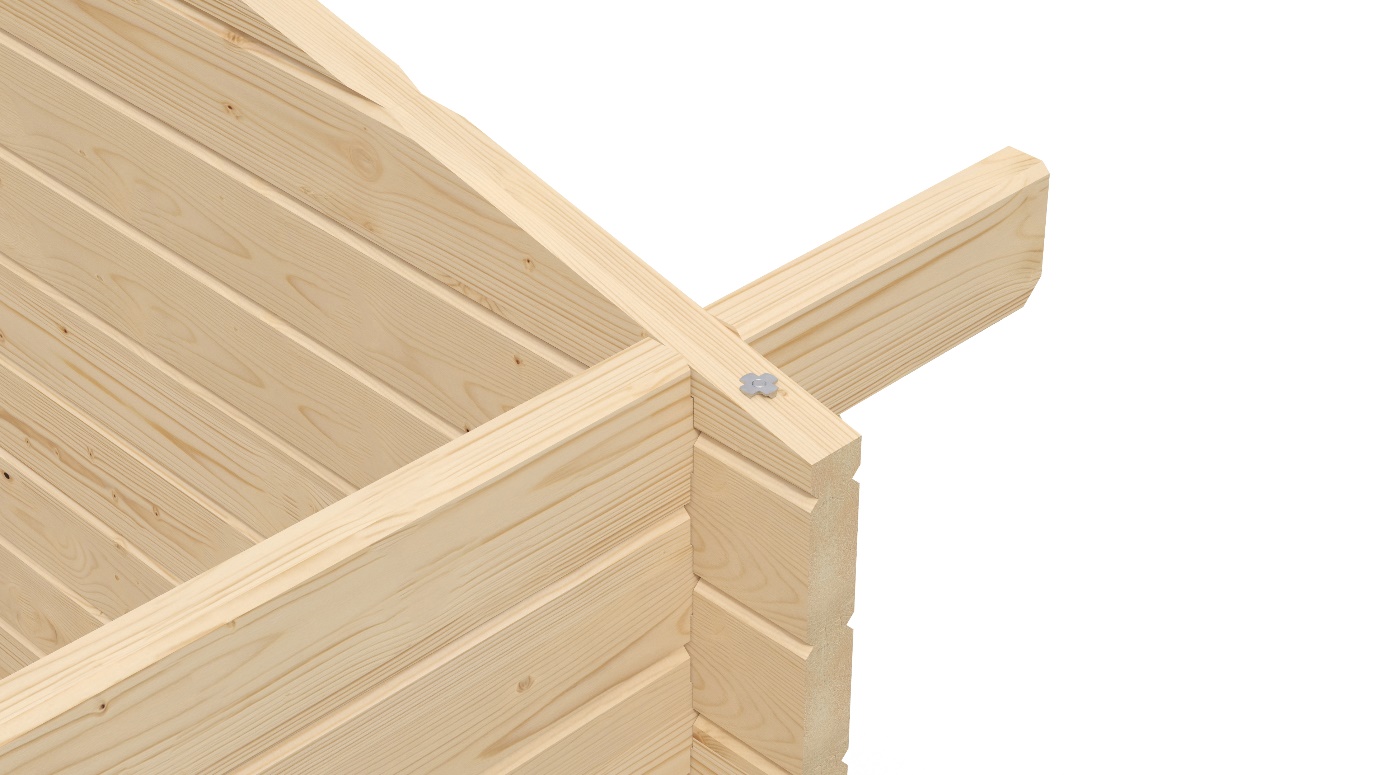Timber Treatment Details
The first and second layer of any paint or oil-based preservative should be applied as soon as possible after the cabin is installed.
All of the wooden parts on the building (the inner walls, outer walls, floor boards, roof boards, door frames, window frames, and so on) should be treated with wood preservative. After the first treatment has been completed, this process should be repeated regularly according to the stipulations of the maintenance manual for your product, and usually every five years.
If you fail to follow the treatment guidelines, our warranty becomes void.
The exterior treatment should be carried out only in dry conditions. Please do not apply exterior paint or preservative in damp or wet weather.
The storm braces
Our products are equipped with metal rods - storm braces - which should be inserted through the entire wall after it has been erected. The rods should be affixed from above with a washer and nut, and hand-tightened from the bottom. This should be done regularly - every two months in the first year and not less than once every four months afterwards.
Please use a spanner only when the nut won’t move by hand due to rust.
You can use a spanner to loosen the nut, but the tightening should ideally always be done by hand.
Allow the wood to settle
The logs in wall constructions should never be mechanically fixed together by screws or any other forms of fixing. Tongue-and-groove milled logs are designed to preserve the integrity of the structure. If you are planning on installing insulation or drywalling, you should use floating lathes with a tolerance of at least 7cm to allow the wood to expand, contract, and settle.
Please note that wood is a natural construction material. Cracks and knots in wooden details are totally natural and are not a sign of poor product quality. They do not compromise the integrity or performance of your product and are not considered to be defects.
If you choose not to insulate the floor of your cabin and do not install a heating system, please note that the floorboards for your product may develop gaps that could need adjusting.
Take note of what types of doors and windows come with your product
Although the majority of our products come with doors and windows that have rubber sealing as a standard feature, there are some products that have STANDARD door and window constructions which do not have rubber seals. This means that these doors and windows may suffer some leakage during potential extreme weather conditions, and this is not a sign of poor product quality.
If you have doors and windows with no rubber sealing, we advise you to install silicone or rubber seals behind the architraves.
This is considered to be part of the basic maintenance regime and is not something that will be done unless you ask for it specifically.
When your product comes with door and window models that have rubber sealing as standard, extra sealing won’t be necessary.
Adjust the doors and windows
Doors and windows with wooden frames may develop problems when opening and closing due to the natural settlement of the wooden frames. To ensure they function correctly, please take the time to adjust them accordingly.
When installing your product you may notice that the openings for doors and windows are bigger than the items themselves. This, once again, is necessary for the initial settling process.
If you feel that you’d like to fill out the gaps that are left behind the door and window frame fixing boards with expanding foam or another insulating agent, please do not do that during the first two years after installation.
If you still feel that it is necessary then it can be carried out afterwards.





